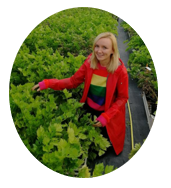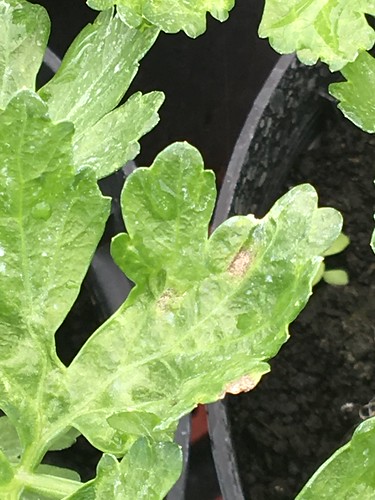Please click here to access the main AHDB website and other sectors.
- Home
- Brighter future for celery growers?
Brighter future for celery growers?
By Aoife O'Driscoll, Plant Pathologist, ADAS, November 2018
Leaf spot caused by the fungus Septoria apiicola is the most destructive disease of field grown celery. The fungus can survive on seed for two years under normal conditions, with very low seed infection rates potentially giving rise to an epidemic. An effective treatment involves a seed soak in warm thiram solution for 24 hours at 30°C. However, with the impending withdrawal of thiram by the European Commission, following successive ‘no opinion’ votes on its re-approval, in addition to limited foliar applied products available for control of the disease, management of Septoria could be a real challenge for the future.
Through the SCEPTREPlus project I am investigating new and alternative products to control Septoria in celery. Two trials will be conducted over 2018 and 2019; the first assessing foliar applied products and the second assessing seed treatments for both the organic and conventional celery market.
The foliar product trial was completed in the polytunnel at ADAS Boxworth from July to October 2018 and screened 9 conventional products and 2 biological products. Despite temperatures reaching over 40°C on site during July, the inoculation worked well and effective treatments were easily identified when compared against the negative control plots (which were inoculated, but did not receive treatment), as anyone attending the BLSA meeting at Boxworth in October could confirm!
Provisional analysis of the data at the end of trial showed that all of the conventional fungicides gave excellent control of disease symptoms with no phytotoxicity symptoms identified. The biological products were ineffective at reducing the symptoms of leaf spot. The final report will be available at the end of 2018, however in the wake of this, three promising products have arisen.
An EAMU for Nativo 75WG for foliar control of Septoria on celery has recently been gained. A mixture of tebuconazole and trifloxystrobin, Nativo introduces a vitally important additional mode of action in the absence of Plover (difenoconazole) which will help with resistance management. Additionally, AHDB are working with manufacturers to see if they can generate residue data for one of the best performing products in the trial; this will be either AHDB9911 or AHDB9892.
An update on the seed treatment trial will follow next year, but in the meantime, in terms of disease control, the future is looking brighter for celery growers in the UK.

Control vs Nativo
SCEPTREplus celery septoria



